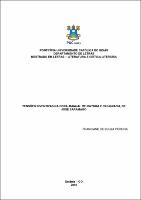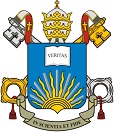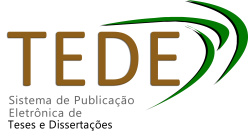| Compartilhamento |


|
Use este identificador para citar ou linkar para este item:
http://tede2.pucgoias.edu.br:8080/handle/tede/3259Registro completo de metadados
| Campo DC | Valor | Idioma |
|---|---|---|
| dc.creator | Pereira, Franciane de Souza | - |
| dc.creator.Lattes | http://lattes.cnpq.br/8998531530768129 | por |
| dc.contributor.advisor1 | Goncalves, Aguinaldo Jose | - |
| dc.contributor.advisor1Lattes | http://lattes.cnpq.br/4802439733657867 | por |
| dc.contributor.referee1 | Oliveira, Paulo Custódio de | - |
| dc.contributor.referee1Lattes | http://lattes.cnpq.br/0359420143341199 | por |
| dc.contributor.referee2 | Machado, Lacy Guaraciaba | - |
| dc.contributor.referee2Lattes | http://lattes.cnpq.br/6281312559432634 | por |
| dc.date.accessioned | 2016-08-10T11:07:19Z | - |
| dc.date.available | 2016-05-12 | - |
| dc.date.issued | 2016-02-23 | - |
| dc.identifier.citation | PEREIRA, Franciane de Souza. TENSÕES INVENTIVAS NA OBRA MANUAL DE PINTURA E CALIGRAFIA, DE JOSÉ SARAMAGO.. 2016. 81 f. Dissertação (Mestrado em Ciências Humanas) - Pontifícia Universidade Católica de Goiás, GOIÂNIA, 2016. | por |
| dc.identifier.uri | http://localhost:8080/tede/handle/tede/3259 | - |
| dc.description.resumo | A pesquisa bibliográfica baseada no livro Manual de pintura e caligrafia, de José Saramago (1977), tem por objetivo analisar as relações de semelhança existentes entre essa obra e as várias tendências da pintura. Comparando a narrativa selecionada com as obras Memorial do convento (2002), Ensaio sobre a cegueira (2003) e As intermitências da morte (2009), do mesmo autor, apontando as singularidades do Manual de pintura e caligrafia (1977) e a vasta alegoria das demais obras e a composição dos planos artísticos. Visa-se ainda apontar as características presentes no romance e seus principais elementos como personagens, tempo e espaço. O processo de criação da moldura no interior da obra permite observar os recursos utilizados pelo autor e o modo como a obra pode ser observada. O fato de a narrativa ser uma obra de arte literária permite um olhar mais minucioso sobre a função e o uso do discurso literário e ainda o discurso da pintura presente nos quadros criados pelo pintor na narrativa. Ainda apontando o fator artístico presente na obra é possível também observar os fatos em relação aos períodos vividos pela própria arte, seus pintores, o processo de condução ao ateliê, a metalinguagem que faz parte da obra e ainda o uso da simulação para a construção da narrativa. São destacados os vários níveis de simulação existentes ao longo da obra e ainda uma possível aproximação com a obra Em busca do tempo perdido, de Marcel Proust (1988), por intermédio do livro Museu movente (2004). Conclui-se que os estudos sobre as relações entre-artes são ramos muito recentes e, portanto, a abordagem que aproxima a literatura e a pintura permite contemplar um novo caminho para essas duas artes. | por |
| dc.description.abstract | The literature based on the book Manual of painting and calligraphy by José Saramago (1977), aims to analyze existing homological procedures between this work and various painting trends, comparing the selected narrative with the convent Memorial works (2002), Blindness (2003) and The flashes of death (2009), by the same author, pointing out the manual singularities, great allegory of the others books and the composition of the artistic plans. The aim is also to point out the features in the novel, their main elements as characters, time and space. The process of creating the frame inside the work allows viewing the resources used by the author and how the work can be observed. The fact that the narrative is a work of literary art allows more detailed observation about the function and use of literary discourse and still speaking of this painting in the tables created by the painter in the narrative. Still pointing the artistic factor present in the work, the facts in José Saramago s work for the periods experienced by the art itself, its painters, the open studio driving process, the meta-language that is part of the work and even the use of simulation for the construction of the narrative can be observed. They are marked the several levels of existing simulation throughout the book and even a possible approach to the same work In search of lost time (1988), by Marcel Proust, through the book Moving museum (2004). It is concluded that the studies on the relationship between branches arts are very recent, so the approach that brings literature and painting allows contemplating a new path for these two artworks. | eng |
| dc.description.provenance | Made available in DSpace on 2016-08-10T11:07:19Z (GMT). No. of bitstreams: 1 FRANCIANE DE SOUZA PEREIRA.pdf: 999576 bytes, checksum: 1a9b11175aa0bc0765ded2a5152cd460 (MD5) Previous issue date: 2016-02-23 | eng |
| dc.format | application/pdf | por |
| dc.thumbnail.url | http://localhost:8080/tede/retrieve/9758/FRANCIANE%20DE%20SOUZA%20PEREIRA.pdf.jpg | * |
| dc.language | por | por |
| dc.publisher | Pontifícia Universidade Católica de Goiás | por |
| dc.publisher.department | Ciências Humanas | por |
| dc.publisher.country | BR | por |
| dc.publisher.initials | PUC Goiás | por |
| dc.publisher.program | Programa de Pós-Graduação STRICTO SENSU em Letras | por |
| dc.rights | Acesso Aberto | por |
| dc.subject | Personagem | por |
| dc.subject | Metalinguagem | por |
| dc.subject | Pintura | por |
| dc.subject | Literatura | por |
| dc.subject | Simulação | por |
| dc.subject | Character | eng |
| dc.subject | Metalanguage | eng |
| dc.subject | Painting | eng |
| dc.subject | Literature | eng |
| dc.subject | Simulation | eng |
| dc.subject.cnpq | CNPQ::LINGUISTICA, LETRAS E ARTES::LETRAS | por |
| dc.title | TENSÕES INVENTIVAS NA OBRA MANUAL DE PINTURA E CALIGRAFIA, DE JOSÉ SARAMAGO. | por |
| dc.type | Dissertação | por |
| Aparece nas coleções: | Mestrado em Letras | |
Arquivos associados a este item:
| Arquivo | Descrição | Tamanho | Formato | |
|---|---|---|---|---|
| FRANCIANE DE SOUZA PEREIRA.pdf | 976,15 kB | Adobe PDF |  Baixar/Abrir Pré-Visualizar |
Os itens no repositório estão protegidos por copyright, com todos os direitos reservados, salvo quando é indicado o contrário.




